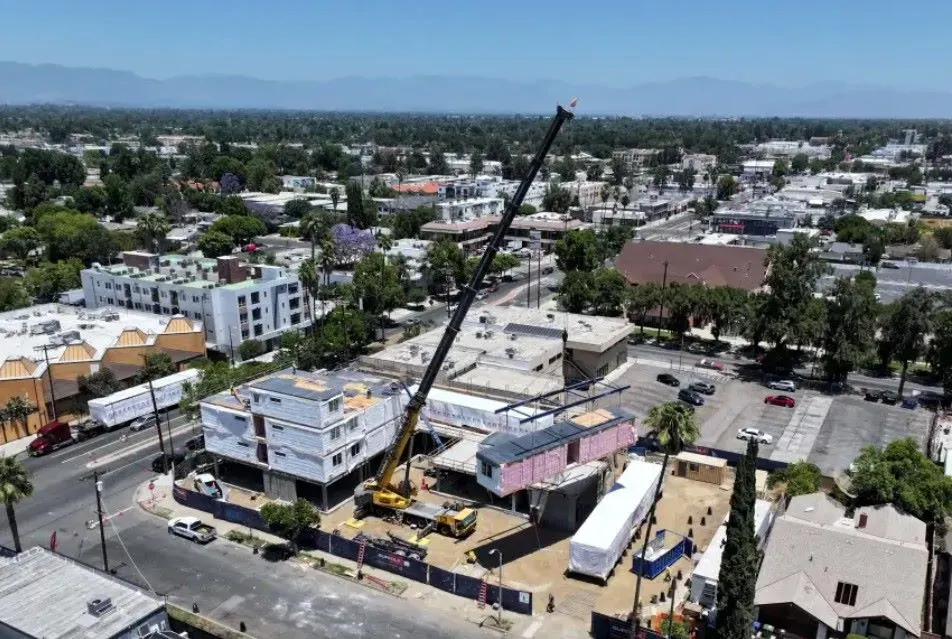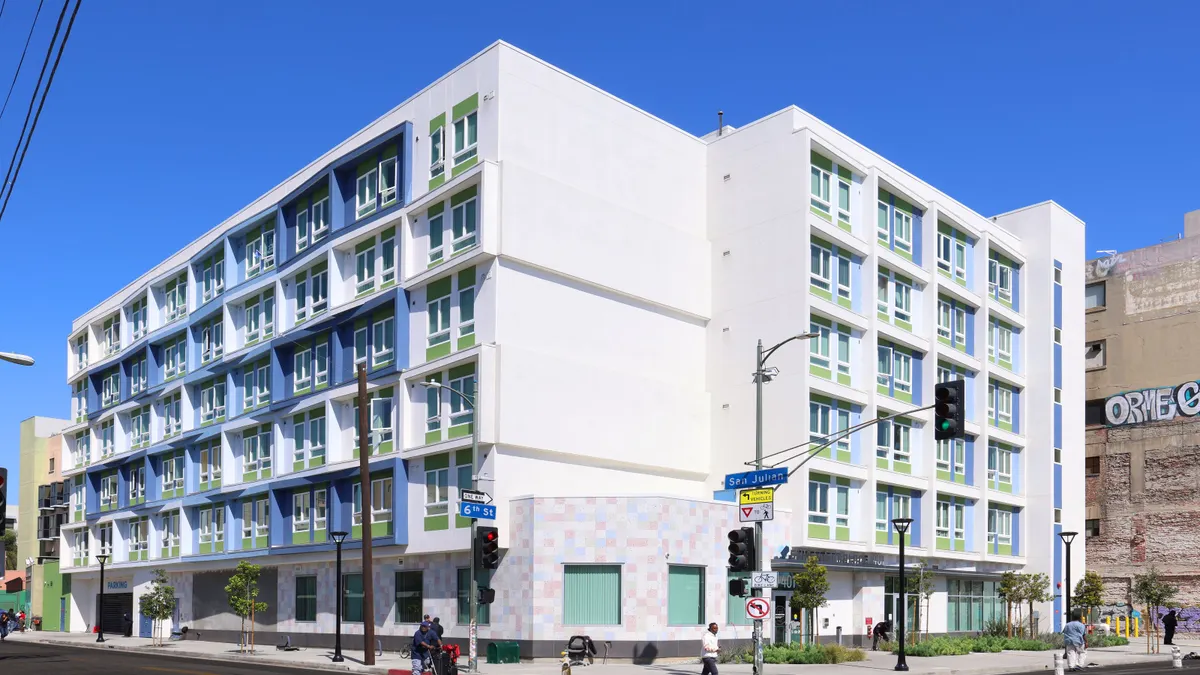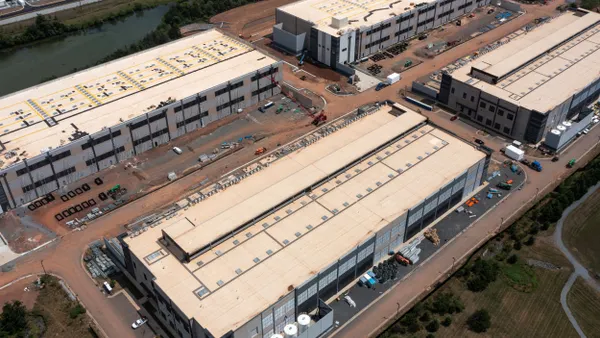Facility managers at higher education campuses can expect better quality and lower maintenance needs if new dormitories and other student housing use modular construction, a general contractor experienced in that method says.
Modular construction is used mostly for affordable housing as a way to bring new units to market at a lower cost, but universities and colleges are looking at it more, according to Jim Stanley, executive vice president and Los Angeles division manager of Suffolk Construction, a builder that operates across the U.S.
A good example is California Polytechnic State University, which plans to bring online some 3,000 beds over 10 years to house the school’s growing student base at a lower cost than stick-built housing while keeping the design aligned to the school’s historical structures, he said.
“Especially with a renowned university like Cal Poly, they want it to be an experience for the student, and they have some historical buildings, so you’re competing with older student housing and you want it to still be a positive experience,” he said.
Modular construction has evolved to include units that can have relatively sophisticated designs without sacrificing the value proposition it offers by simplifying and standardizing the base component, he said.
“I’ve seen quite a few modular jobs that have [ornamental] projections where the [modules] get stacked,” he said. “Maybe the actual box itself has to be enhanced in order to handle some of these things.”
Modular building manufacturers have evolved two types of business models, Stanley said. They either build each modular unit from scratch or they act as an assembly line and contract with other manufacturers to produce pieces of the unit.
“They might outsource the frame construction, the wall panel construction and the bathroom pod — similar to how a car is made,” he said.
Cal Poly could expect to get the main structure for a 100-unit building completed in seven days — 30% quicker than if stick-built — using the modular method, with roughly corresponding savings in cost, Stanley said.
“Yes, I still have to scaffold it and roof it,” he said. “I have to put the facade on the skin, and there’s still work that has to happen, but the structure gets topped out, plus the interior fitted out” in that shorter time frame.

Once the modular units are stacked by a crane, workers can come in and, relatively quickly, connect the plumbing, electrical and mechanical infrastructure of the individual units to the main system, he said.
For the electrical, “all I have to do, once the mod gets set, is run my main feeder to that [central] panel, and then everything else is already distributed from that point,” he said. “From a plumbing perspective … if I have a stack that’s a riser, and it overlays on the mod below and [the one] just above it, I have about 18 inches of new pipe that I have to install to connect point A to point B, in theory, at the floor and at the ceiling to the next unit above, and it just goes straight up and down vertically…. Same with mechanical. It’s very self-contained in the unit.”
For facility managers who are charged with maintaining the buildings after they’re put in operation, modular construction can result in fewer problems because each unit is built in a manufacturing plant to uniform standards subject to on-site quality control inspections before it’s sent to the construction site, he said.
“If I am building the same unit over and over, 100 times, and I have the same person doing the same task 100 times, and I have a [quality control] checklist that I go through to say this happened, this happened -– literally check those boxes [– then, in theory, there’s a lot more control,” he said. “You’re less likely to have a plumbing trap missing, for instance.”
Suffolk focuses mainly on stick-built multifamily housing in the $40 million-plus range, but it has also developed expertise in projects with a modular component, Stanley said. It contracts with manufacturers to build the units to the client’s specifications with its input and oversight.
“We send a Suffolk representative to the plant to do a lot of hand-holding,” he said. “The quality of the mod, ultimately, is the quality of the job because we own the end product, so it behooves us to [oversee] their production.”
Costs for modular construction should come down as client institutions, manufacturers, component makers and contractors refine best practices, he said. Modular construction could also be applied to building types other than housing. In a campus setting, that could mean classrooms and labs.
“Some K-12 schools are experimenting with modular-built classrooms and other buildings, but at the college level, expanding beyond housing remains mainly in the conversation stage,” Stanley said. “I’m not familiar yet with anything actually being built.”
But the economics of construction are driving clients and industry executives to include modular construction in the conversation, he said.
“I look at modular as a solution to a problem,” he said. “You have increased cost of materials, skilled labor shortages” among the factors affecting on-site construction. With modular, “You’re taking a lot of variables and putting them into a manufacturing environment.… That’s where I see [construction] trending.”












